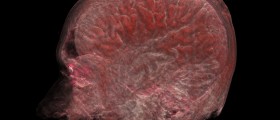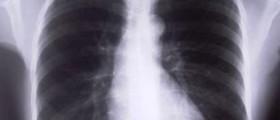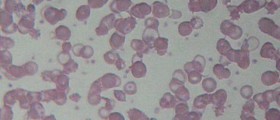
Tay-Sachs disease is a rare genetic disorder affecting nerve cells of the brain and the spinal cord which eventually get permanently damaged. This inherited disease equally affects both genders and its symptoms and signs basically become noticeable between 3 and 6 months of age. Until then infants appear healthy. Unstoppable progression of the disease inevitably leads to many complications such as blindness. Lethal outcome most commonly takes places before the age of 5.
In rare cases Tay-Sachs disease starts in later childhood, adolescence of even adulthood. These types of the disease are milder. Unfortunately, the disease is incurable. Patients are treated symptomatically and the goal of the treatment is to help such children deal with all the medical issues associated with the disorder.
Tay-Sachs Disease Causes
This genetic disorder develops as a result of the absence of an important enzyme called Hexosaminidase-A. If there is absence of this enzyme in the body, a fatty substances medically known as ganglioside starts to accumulate inside the nerve cells. Progressive build-up of gangliosides is a cause of eventual damage to the affected nerve cells.
Only if an individual inherits copies of a faulty gene from both parents, he/she will develop the disease. If one copy is inherited, the person does not end up with Tay-Sach disease but can, under certain circumstances, transmit the illness to his/her descendants.
Tay-Sachs Disease Clinical Characteristics
In spite of healthy looking appearance of newborns, several months after the child is born he/she shows signs of slow development and gradually loses the ability to move.
For instance, the child may stop smiling, show prominent startle reactions and lose sight. The movements slow which is evident while performing activities such as reaching out, holding onto objects, tuning over and crawling.
Disease progression is accompanied by loss of control over movements, lack of energy, irritability, loss of hearing, loss of vision, seizures, progressive dementia, swallowing difficulties etc. Finally, a complete paralysis takes place. Most patients die before the age of 5 and majority of them actually die due to complications like pneumonia.Tay-Sachs Disease Prevention
As previously mentioned the disorder is practically incurable. However, there are ways to foresee whether the child is at risk of developing the disease. Namely, a simple blood test can detect carriers of the defective gene. So prenatal testing is highly efficient means which can confirm the presence of defective gene. If both parents are carriers of the gene, there is also a need for antenatal testing that may give insight in whether the fetus has inherited both copies of the defective gene. Termination of pregnancy is suggested only if the fetus has inherited both copies of the defective gene.

















Your thoughts on this
Loading...